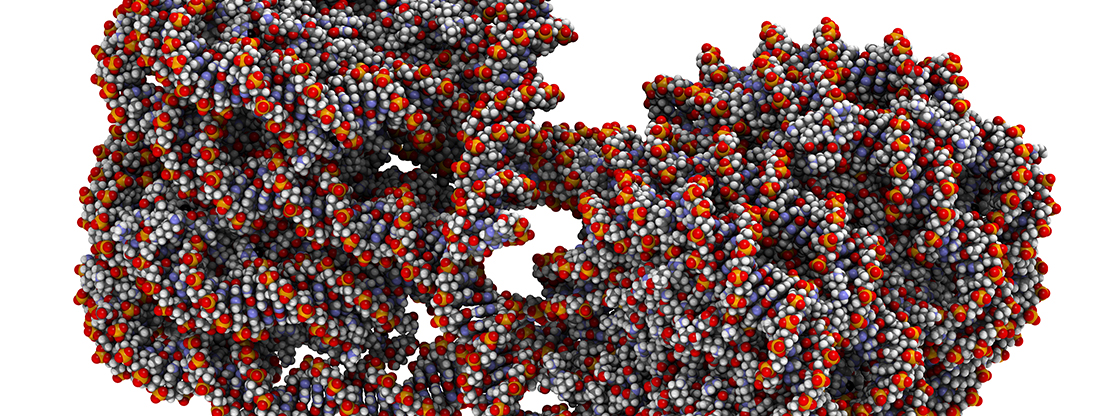From a close-up look at molecules that are one-billionth of a meter long to unraveling the code that operates on top of our DNA, there’s no shortage of discoveries to be excited about in cancer research. In honor of Cancer Research Month, we’re taking a look at six of the most compelling discoveries and initiatives in the field.
An epigenetic explosion
It was a question that was only answered relatively recently—if almost every cell in the body has the same genetic code, why do we have so many different cell types, each with different functions? Why do some cells become bone, while others become skin? And why do some get off track and become cancer? While the details are still being investigated, we now know that the mechanism that acts as the conductor for our genetic symphony is the epigenome, a set of molecular marks that tell our genes when to switch on and off, ultimately determining cell type and function. In the past few years, our understanding of the epigenome’s role in normal health and development as well as in cancer and other diseases has exploded, giving scientists new insight and opportunities to develop the next generation of targeted therapies.
A structural revolution
They say a picture is worth a thousand words. This is particularly applicable in science, where extremely detailed images can provide much needed insights into how important molecules look and how they interact, which then informs the development of better therapies for diseases such as cancer, Parkinson’s, diabetes and many others. Thanks to revolutionary imaging technologies such as cryo-electron microscopy (Cryo-EM), scientists now can get a close-up look at these molecules more quickly, more efficiently and more detailed than ever before. Think about it like a lock and key system—if you know what the lock (or the biological target) looks like, you can design the perfect key (a new therapy) to fit it.
Collaborations and Big Data on a large scale
Whether it’s sequencing the human genome and epigenome, surveying the proteome (the total set of proteins in the body), investigating how differences in genetic makeup affect disease onset or moving promising therapies into clinical trials, team science has had a massive impact on shedding light on what makes our bodies tick. A good example is The Cancer Genome Atlas, a National Institutes of Health-funded multi-institutional effort to genomically and epigenomically map several cancers. So far, this project has provided a detailed window into what certain cancers look like on a molecular level and has even redefined some disease classifications. On the translational front, collaborations between scientists and clinicians continue to help move promising therapies into clinical trials, a crucial step in translating lab discoveries into life-changing therapies. Thanks in large part to technology, collaborations are no longer constrained by geography—regardless of location, experts can collaborate and share data.
Shooting for the moon
Speaking of collaborations, we would be remiss if we didn’t mention the National Cancer Moonshot announced earlier this year during the State of the Union. The $1 billion initiative aims to “eliminate cancer as we know it” through an infusion of funding, streamlining data access and enhancing collaborations between scientists, clinicians, patients, advocates, philanthropy and industry.
Immune innovations
In recent years, the ability to harness the body’s own immune system to fight cancer has been at the forefront of cancer research. Discoveries abound, from those that give us a clearer picture of how immunotherapies work to actual new treatments that are changing the standard of care for patients. While many immune therapies are now available to patients, scientists and clinicians are hard at work to develop new and better treatments to bolster the body’s own defense mechanisms to combat cancer.
CRISPR/Cas9
CRISPR/Cas9 is a revolutionary genome editing technique that is upending the science apple cart by allowing scientists to more quickly and more accurately model cancer and investigate the molecular underpinnings of the disease. The technique is constantly being refined and is sure to continue making headlines.
